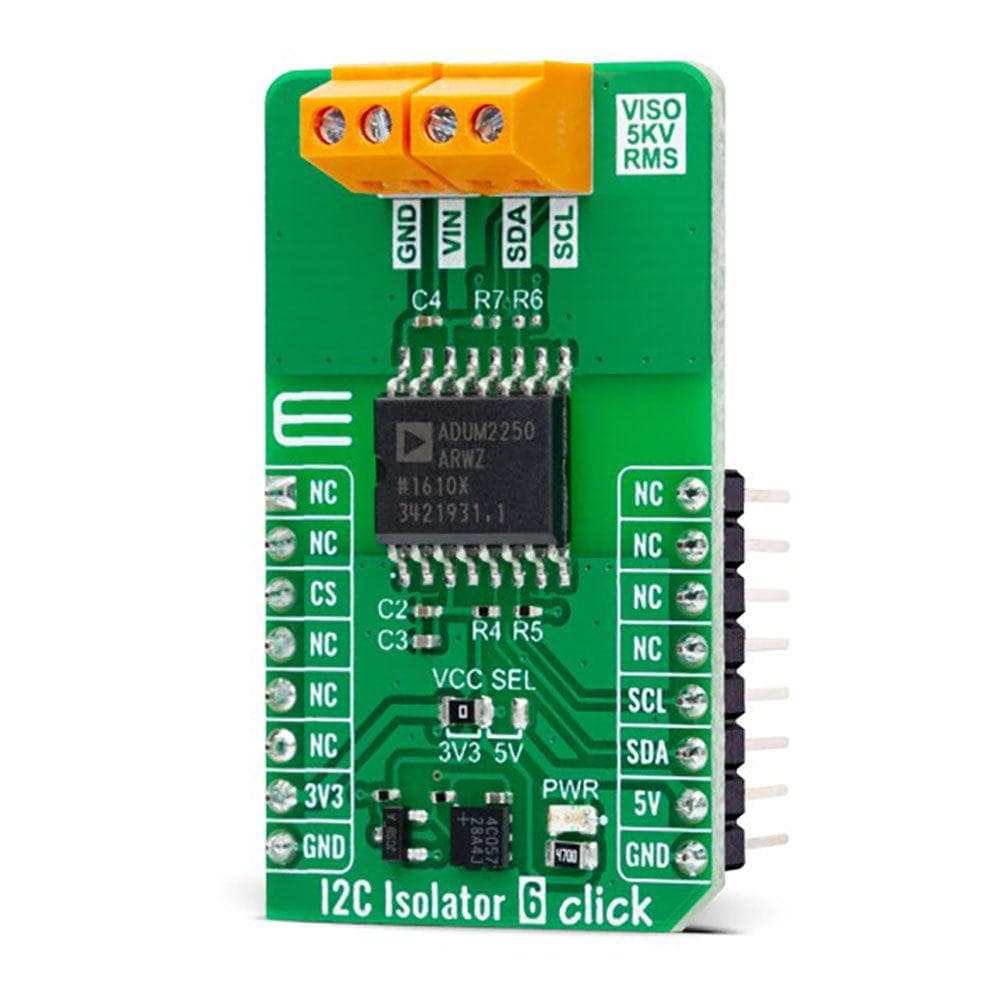
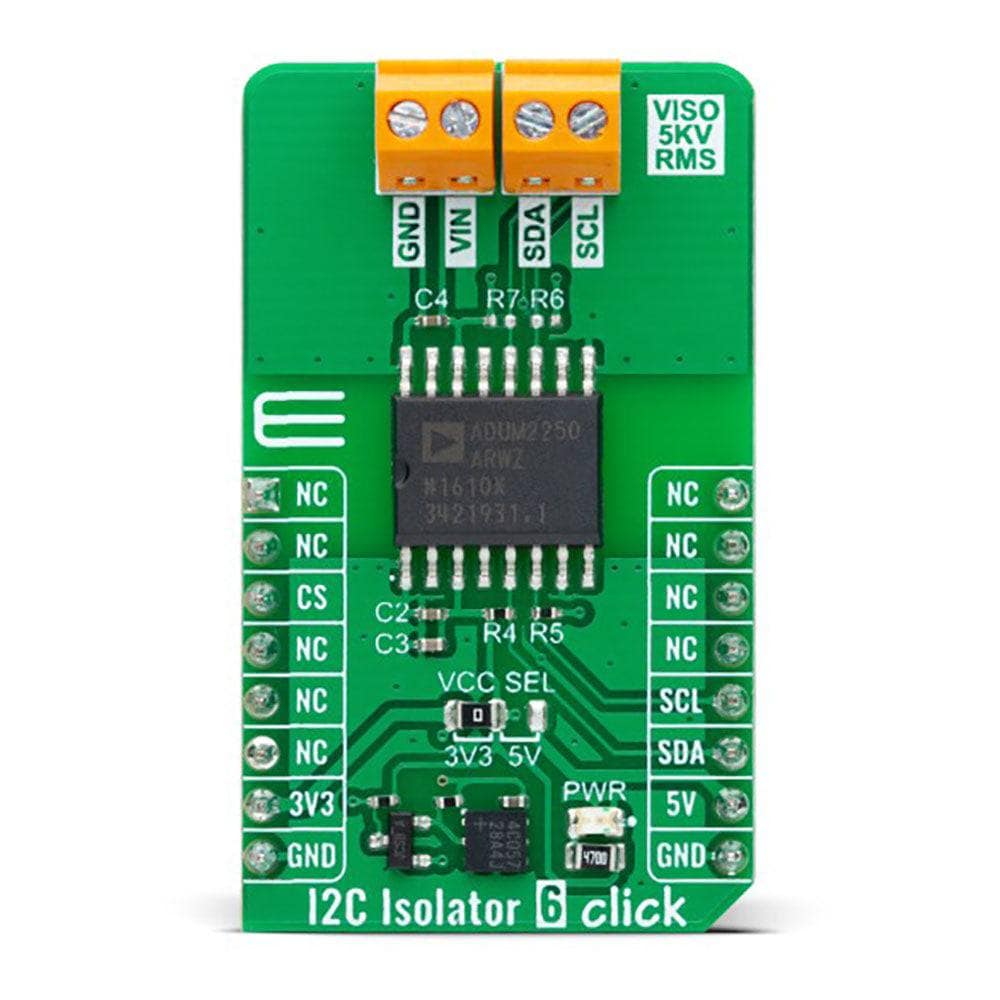
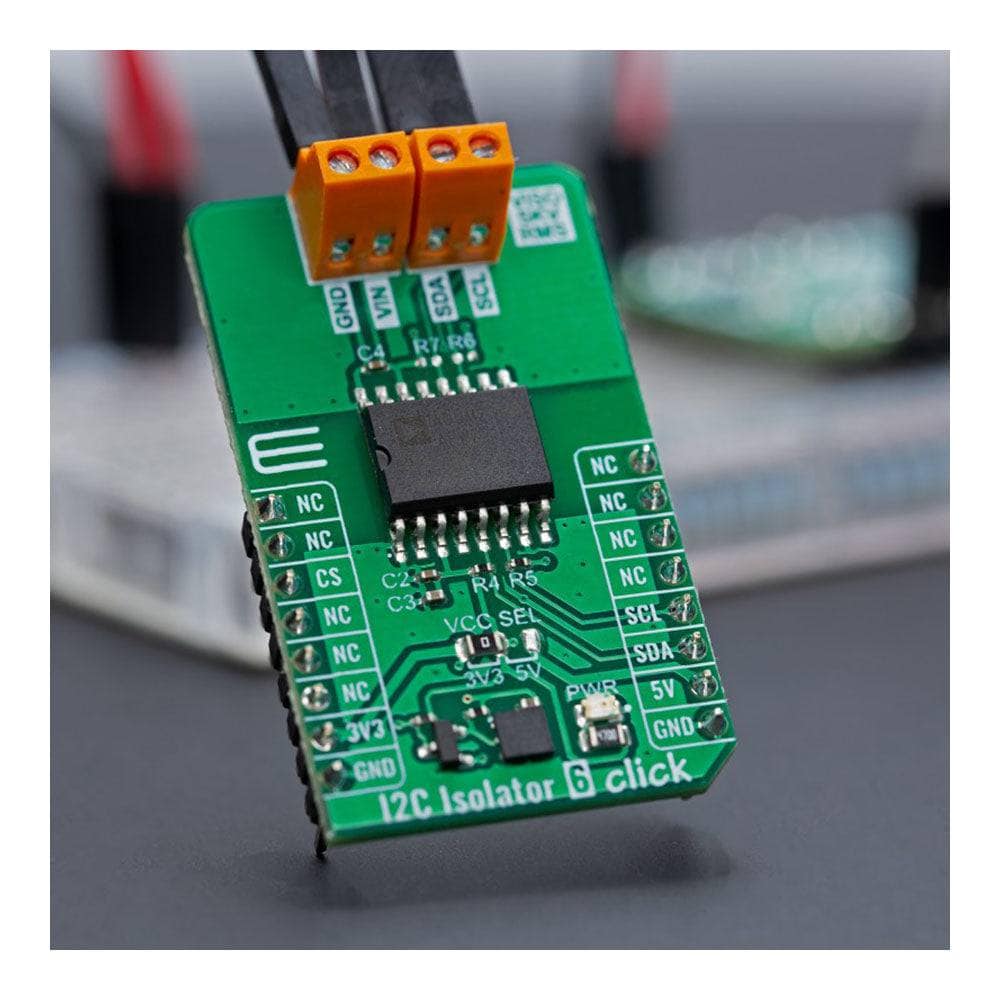

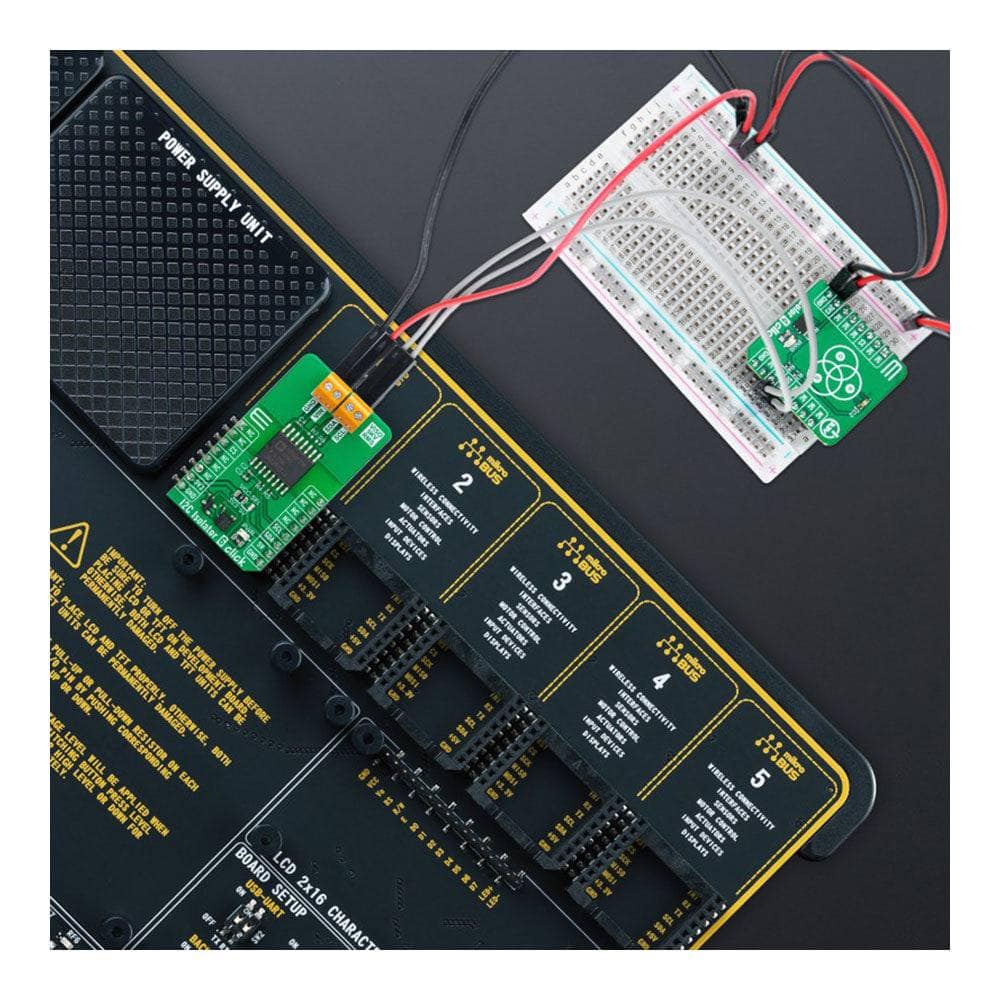
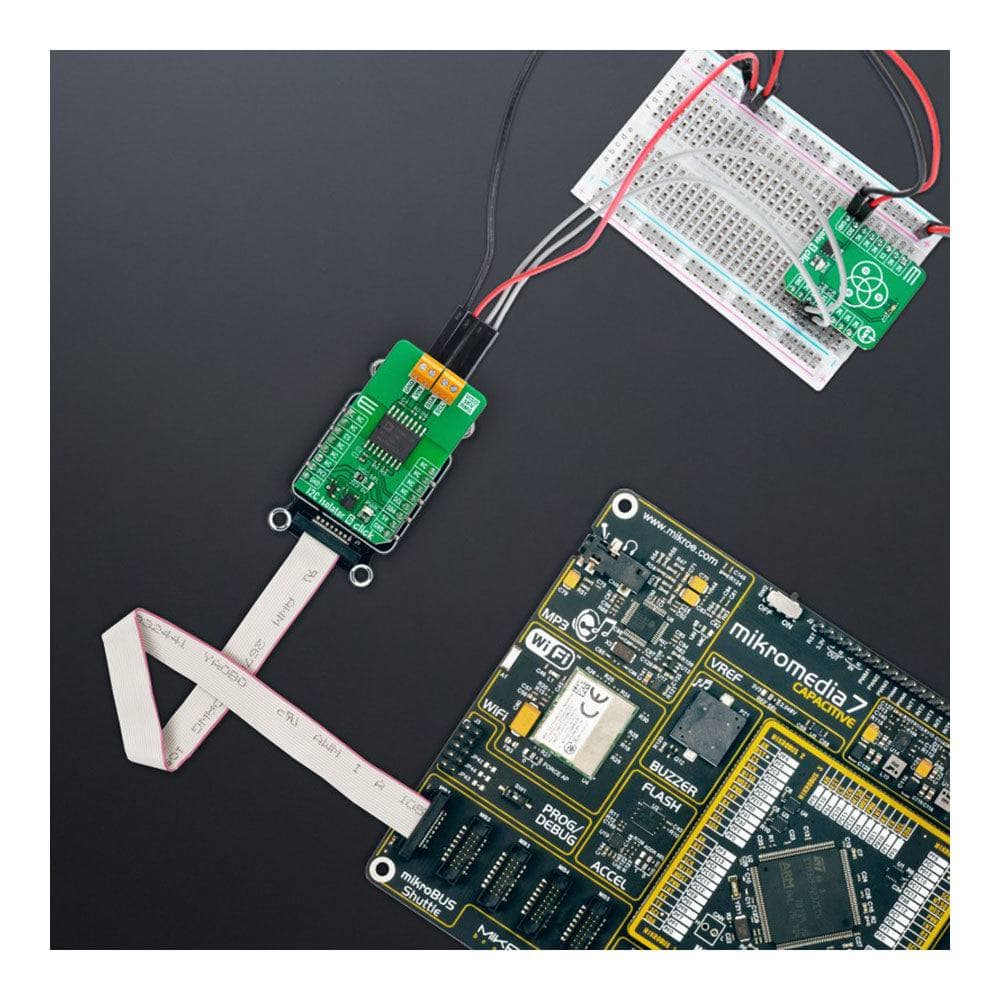
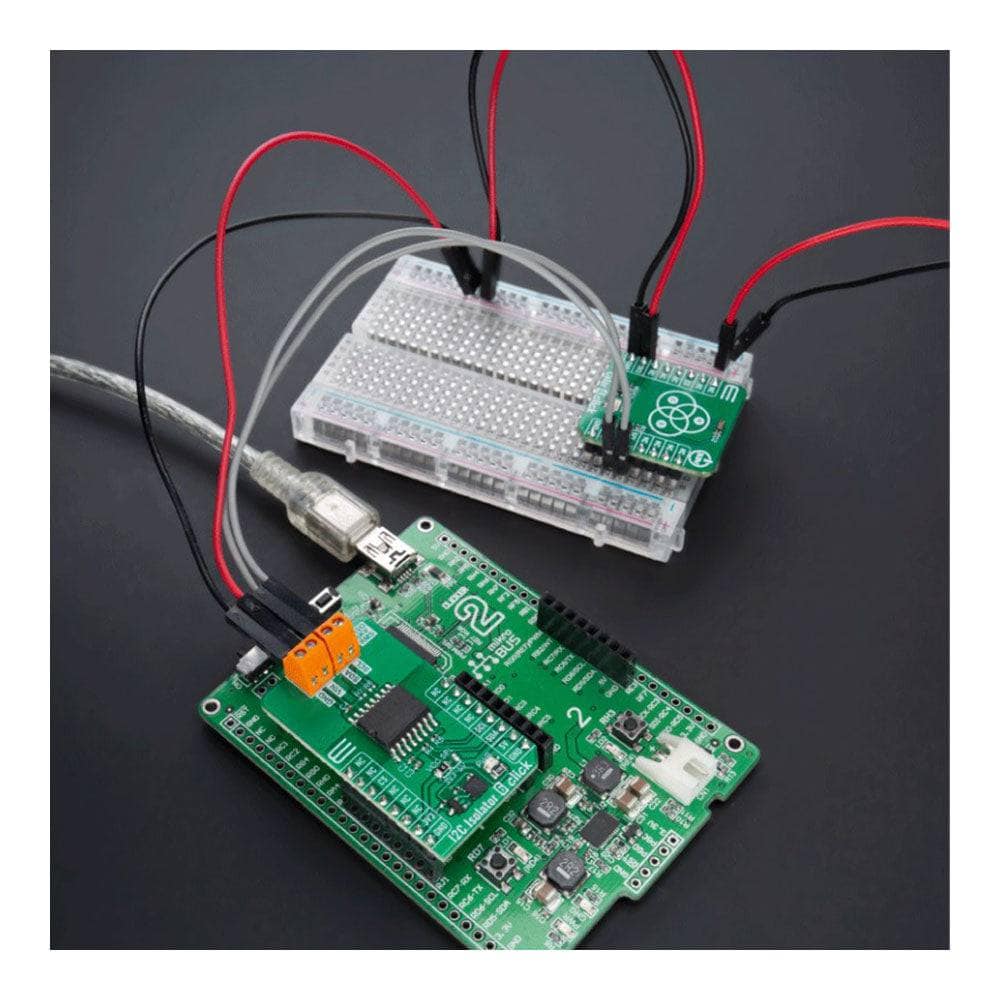
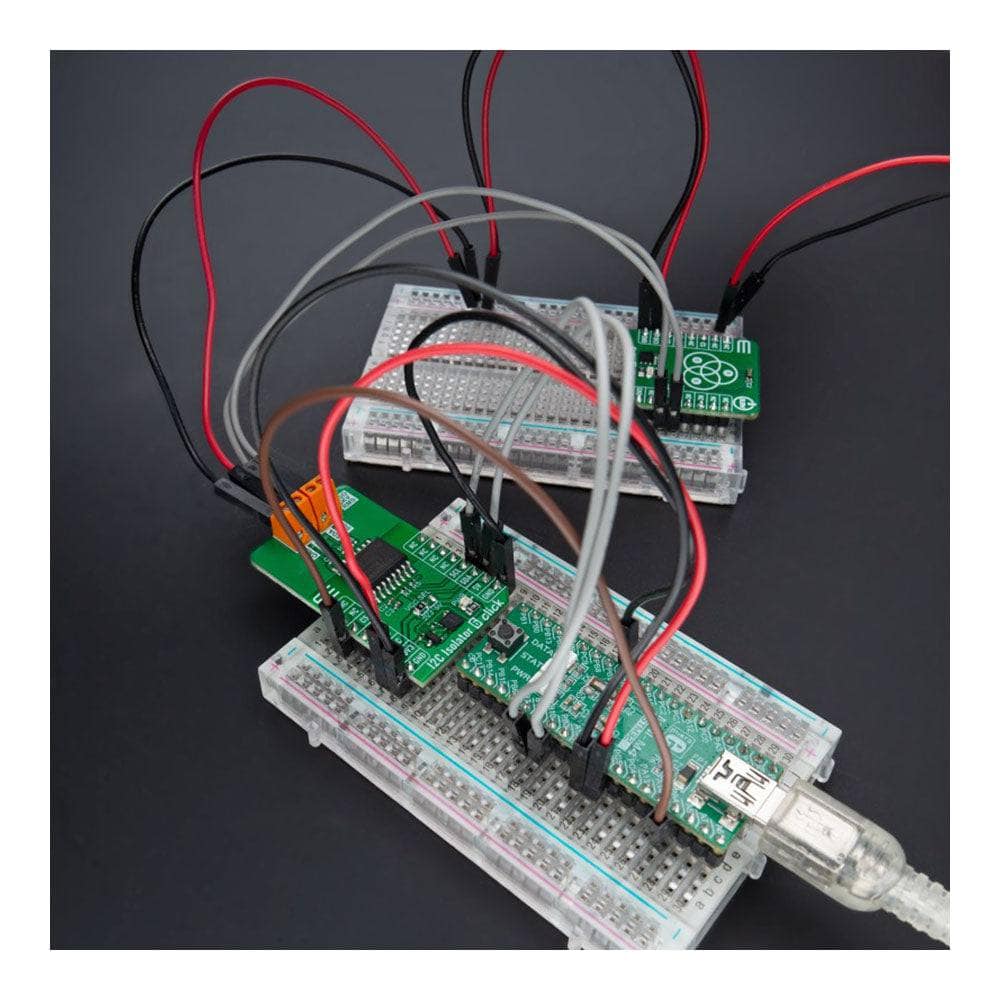
Key Features
Overview
Eliminate the Need for Splitting I2C Signals
With the ADUM2250, you'll enjoy two bidirectional channels that support a fully isolated I2C interface, eliminating the need for splitting I2C signals into separate transmit and receive signals. This innovative design allows for data rates from DC up to 1MHz and includes hot swap circuitry to prevent data glitches.
Perfect for Transferring Digital Signals Between Circuits
Our I2C Isolator 6 Click Board™ is the ideal solution for transferring digital signals between circuits with different power domains at ambient temperatures. Experience seamless integration and optimal performance in your next project.
Supported by mikroSDK Compliant Library
Our I2C Isolator 6 Click Board™ is backed by a mikroSDK compliant library, offering a suite of functions that streamline software development. You'll have all the tools you need to get started right away.
Ready to Use with mikroBUS™ Socket
This Click board™ comes as a fully tested product, ready to be used on a system equipped with the mikroBUS™ socket. Don't wait – upgrade your project with the I2C Isolator 6 Click Board™ today!
Downloads
Eliminieren Sie die Notwendigkeit, I2C-Signale aufzuteilen
Mit dem ADUM2250 profitieren Sie von zwei bidirektionalen Kanälen, die eine vollständig isolierte I2C-Schnittstelle unterstützen, sodass I2C-Signale nicht mehr in separate Sende- und Empfangssignale aufgeteilt werden müssen. Dieses innovative Design ermöglicht Datenraten von DC bis zu 1 MHz und umfasst Hot-Swap-Schaltungen zur Vermeidung von Datenstörungen.
Perfekt für die Übertragung digitaler Signale zwischen Schaltkreisen
Unser I2C Isolator 6 Click Board™ ist die ideale Lösung für die Übertragung digitaler Signale zwischen Schaltkreisen mit unterschiedlichen Leistungsbereichen bei Umgebungstemperatur. Erleben Sie nahtlose Integration und optimale Leistung in Ihrem nächsten Projekt.
Unterstützt durch mikroSDK-kompatible Bibliothek
Unser I2C Isolator 6 Click Board™ wird von einer mikroSDK-kompatiblen Bibliothek unterstützt und bietet eine Reihe von Funktionen, die die Softwareentwicklung optimieren. Sie haben alle Tools, die Sie brauchen, um sofort loszulegen.
Sofort einsatzbereit mit mikroBUS™-Buchse
Dieses Click Board™ ist ein vollständig getestetes Produkt und kann sofort in einem System verwendet werden, das mit der mikroBUS™-Buchse ausgestattet ist. Warten Sie nicht – rüsten Sie Ihr Projekt noch heute mit dem I2C Isolator 6 Click Board™ auf!
| General Information | |
|---|---|
Part Number (SKU) |
MIKROE-5603
|
Manufacturer |
|
| Physical and Mechanical | |
Weight |
0.02 kg
|
| Other | |
Country of Origin |
|
HS Code Customs Tariff code
|
|
EAN |
8606027385414
|
Warranty |
|
Frequently Asked Questions
Have a Question?
-
What is the maximum isolation voltage provided by the ADUM2250?
The ADUM2250 provides a maximum isolation voltage of 5kVRMS.
-
Does the I2C Isolator 6 Click Board™ require splitting I2C signals into separate transmit and receive signals for use with standalone optocouplers?
No, the I2C Isolator 6 Click Board™ eliminates the need for splitting I2C signals into separate transmit and receive signals for use with standalone optocouplers.
-
What is the data rate supported by the ADUM2250?
The ADUM2250 supports data rates from DC up to 1MHz.
-
What are the benefits of using the I2C Isolator 6 Click Board™?
The I2C Isolator 6 Click Board™ offers completely isolated bidirectional communication, simplifies software development with the mikroSDK compliant library, and comes as a fully tested product that is ready to be used on a system equipped with the mikroBUS™ socket.
-
What is the ADUM2250?
The ADUM2250 is a two-channel, 5kVRMS I2C digital isolator from Analog Devices that provides two bidirectional channels and supports a completely isolated I2C interface. It eliminates the need for splitting I2C signals into separate transmit and receive signals for use with standalone optocouplers. It supports data rates from DC up to 1MHz and has hot swap circuitry to prevent data glitches.
-
What is the I2C Isolator 6 Click Board™?
The I2C Isolator 6 Click Board™ is a compact add-on board that provides completely isolated bidirectional communication. It is designed to transfer digital signals between circuits with different power domains at ambient temperatures.








